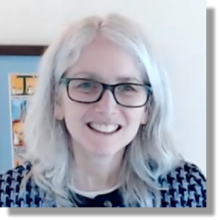MSE 298 Seminar (Zoom): Surface Dimer Engineering of Highly Mismatched Alloys

Professor
Department of Materials Science and Engineering, and Physics
Department of Electrical Engineering and Computer Science
University of Michigan
Zoom: https://uci.zoom.us/j/98066455796?pwd=ODBUbUxySm9ObHRYWUFEaVlJMFo5UT09, meeting ID: 980 6645 5796, passcode: 974689
Abstract: Highly mismatched "designer" alloys are materials that contain chemical elements with very different atomic sizes and abilities to attract nearby electrons. When a few atoms with larger or smaller atomic sizes are added to a host material, its electrical and optical properties often change dramatically. For example, the incorporation of dilute fractions of nitrogen and bismuth solute atoms into III-V semiconductors induces significant energy bandgap narrowing; thus, emerging dilute-nitride-bismuthide alloys are of significant interest for long-wavelength applications ranging from temperature-insensitive laser diodes to ultra-high efficiency multijunction photovoltaic cells. While the properties of emerging dilute-nitride-bismuthide alloys are highly sensitive to local atomic environments, the solute incorporation mechanisms are not well understood. In this talk, we present combined computational-experimental studies, which enabled our pioneering epitaxy and band structure engineering of GaAs(N):Bi alloys. In addition to describing recent advances in surface reconstruction-driven control of solute incorporation [1,2] and atomic-ordering [3], we present a new “magic ratio” for lattice matching of GaAsNBi with GaAs substrates [4]. We also present a strategy for the synthesis and tailored electronic structure of III-V bismuthides [5] for integration with III-V based electronics.
This work was supported by the National Science Foundation (Grant Nos. DMR 1410282 and 1810280); the Center for Integrated Nanotechnologies, jointly operated by Los Alamos and Sandia National Laboratories for the U.S. Department of Energy (DoE); and the Office of Science Graduate Student Research Program, administered by the Oak Ridge Institute for Science and Education for the U.S. DoE.
Bio: Rachel S. Goldman is a professor of materials science & engineering, physics, and electrical engineering & computer science at the University of Michigan. She is the associate director of applied physics and has served as MSE graduate chair, associate director of the DoE Energy Frontiers Research Center, and education director of the NSF Materials Research Science and Engineering Center. Goldman's research emphasizes the materials physics of semiconductors, with a recent focus on dilute nitride-bismuthide "magic" alloys. She has published > 135 papers on processing-structure-property correlations in semiconductors; she holds a U.S. patent on “ion-cut-synthesis,” a novel approach for simultaneous synthesis and integration of nanocomposite materials with virtually any substrate. Recently, she has pioneered the incorporation of Writing to Learn pedagogies into introductory materials science and engineering courses. Goldman is a fellow of the American Physical Society (APS) and the American Vacuum Society. She is associate editor of the Journal of Applied Physics and chair of the APS Division of Materials Physics.
Share
Related Content
| Attachment | Size |
|---|---|
| 339.26 KB |
Upcoming Events
-
UCI CEE Affiliates, A.I. Implementation, Spring 2024 Quarterly Meeting Event
-
EECS Seminar: AI Models for Edge Computing - Hardware-aware Optimizations for Efficiency
-
CBE 298 Seminar: Electrified Ultrahigh-Temperature Manufacturing of High Entropy Alloys
-
MSE 298 Seminar: New Platforms For Quantum Sensing and Quantum Computing
-
CEE Distinguished Seminar Series Spring 2024 ”Origami Engineering”
